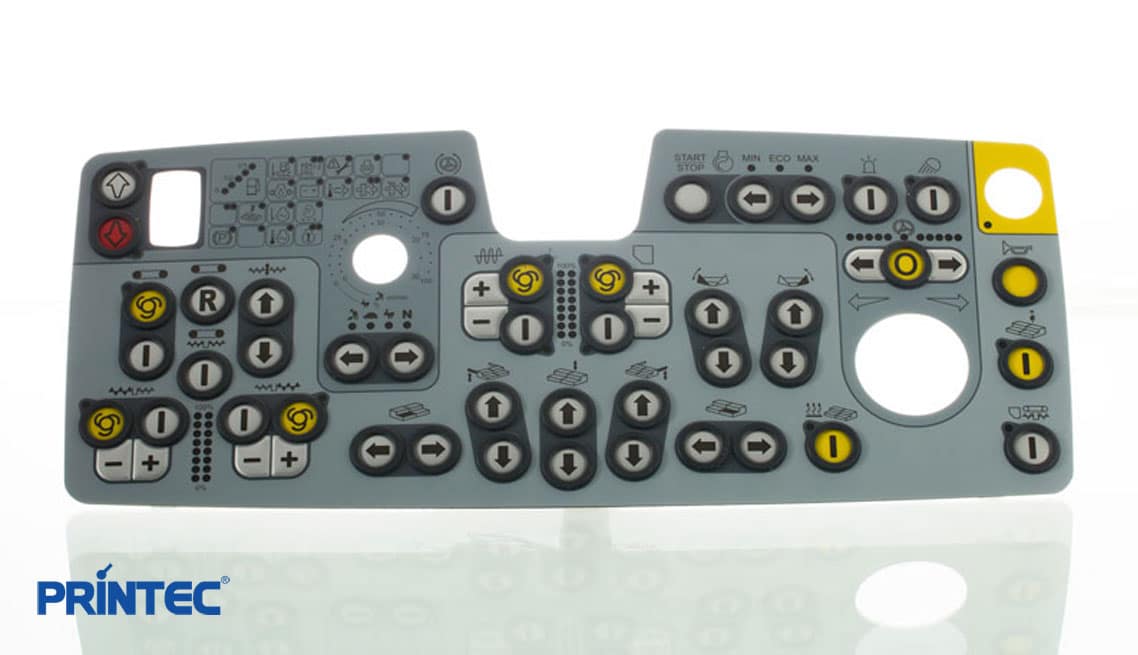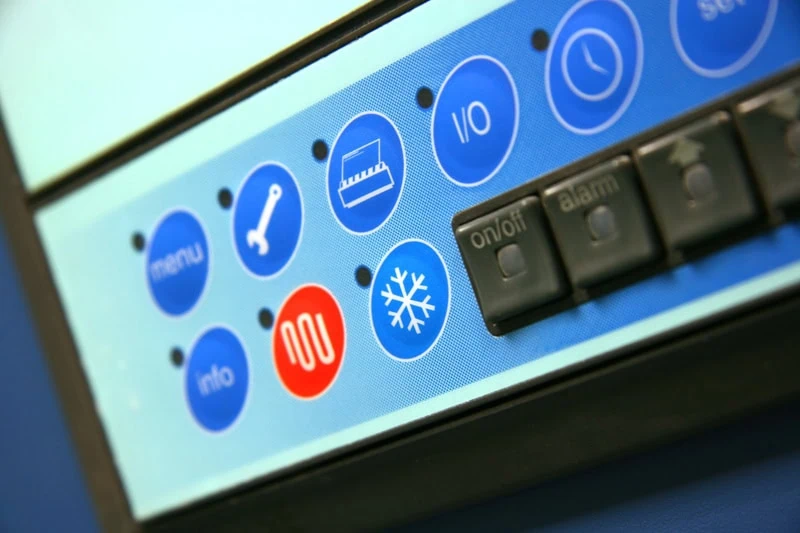Discover the Duty of Membrane Switches in Medical Gadgets and Tools
Discover the Duty of Membrane Switches in Medical Gadgets and Tools
Blog Article
The Ultimate Source on Membrane Switches Over: Style, Capability, and Applications
Membrane switches over offer as an intriguing crossway of style and performance, playing an essential role in modern-day user interfaces across numerous sectors. As we explore the varied applications of membrane switches, it ends up being evident that their versatility and durability are critical in environments varying from medical care to customer electronics.

Comprehending Membrane Switches
Membrane switches are a kind of customer interface innovation extensively used in various electronic gadgets, defined by their slim, versatile layout and functionality. These switches consist of numerous layers that consist of graphic overlays, adhesive layers, and circuitry, making it possible for a efficient and small user interface for customers. They can be found in devices, clinical devices, and industrial control board, giving a trustworthy method for user communication.
Among the key benefits of membrane layer buttons is their capability to stand up to pollutants such as dirt and wetness, making them suitable for atmospheres where resilience is crucial. Their inconspicuous style enables smooth combination right into different applications, while the personalized graphic overlays boost user experience by providing clear visual feedback. In addition, membrane layer buttons can accommodate a selection of technologies, such as responsive feedback and backlighting, additional enhancing their functionality.
The production procedure for membrane changes usually includes screen die-cutting, printing, and lamination methods, guaranteeing precision and consistency in production. In general, membrane changes represent a functional and efficient solution for modern digital gadgets, combining performance with visual allure in customer interface layout.
Key Components and Design Components
A selection of key parts and design components collaborated to produce a reliable membrane layer switch. At the core, the visuals overlay offers both practical and visual purposes, supplying an easy to use user interface while securing interior parts from ecological elements. The choice of materials, usually polyester or polycarbonate, influences longevity and responsive responses.
Under the overlay, the glue layer ensures the switch adheres firmly to the substratum, which can be glass, metal, or plastic. The spacer layer is vital, as it maintains the essential void in between the circuit and the overlay layers, permitting reliable actuation. Membrane Switches. Circuit traces, usually made from conductive ink or adhesive, are printed on an adaptable substrate, making it possible for electrical signals to be sent when pressure is used
Design factors to consider likewise consist of the arrangement of tactile domes or embossing that give physical feedback to the customer, enhancing the overall experience. In addition, the format and spacing of the buttons must be optimized for convenience of usage, making certain that users can browse the interface with ease. Generally, these components and design aspects function synergistically to develop a trusted, useful membrane layer switch tailored to specific applications.
Functionality and Procedure Mechanism
At the heart of reliable functionality for membrane layer changes lies their functional system, which helps with individual interaction through an easy yet effective style. These buttons operate the principle of stress activation, where an individual applies force to a marked area of the button (Membrane Switches). This activity presses the layers of the switch, finishing an electrical circuit that sends a signal to the linked gadget
The building and construction commonly includes a top visuals layer, a glue spacer layer, and a bottom circuit layer, which jointly form a robust interface. When stress is applied, the top layer falls down versus the bottom circuit layer, enabling conductive traces to attach. This style not only allows clear tactile feedback however additionally ensures sturdiness and dependability, as the switches are commonly immune to dirt and dampness.
Additionally, the versatility of membrane layer switches over enables assimilation with numerous modern technologies, including LED signs and microcontrollers, enhancing their functionality. By offering a streamlined user interface that decreases mechanical wear, membrane layer switches over continue to be a preferred option in applications ranging from customer electronics to industrial tools, making certain optimal efficiency and customer contentment throughout diverse settings.
Sorts Of Membrane Switches

One more considerable group is brightened membrane layer switches, which incorporate backlighting to improve exposure in low-light problems. These buttons are typically made use of in control panels and dashboards where clear visibility is necessary.
In addition, there are customized membrane layer switches developed to satisfy details dimensional, visual, and functional demands. These personalizations can consist of one-of-a-kind forms, shades, and layouts, permitting smooth assimilation right into numerous gadgets.

Applications Throughout Numerous Industries
Exactly how do membrane buttons enhance capability across varied markets? In the clinical market, membrane buttons play a vital function in devices such as analysis tools and client surveillance systems, where dependability and convenience of cleaning are extremely important.
In the automobile industry, membrane buttons are generally utilized in dashboards and control board, offering instinctive controls that enhance vehicle driver safety and ease. The consumer electronic devices field also profits from their personalized and lightweight functions, making it possible for sleek designs for mobile phones and home devices.
Moreover, membrane switches discover applications in commercial automation, where they add to efficient machinery operation and tracking systems. Their resistance to dirt and dampness guarantees performance popular problems (Membrane Switches). Additionally, the food and beverage market web link uses membrane switches for tools control, where hygiene and sturdiness are crucial
Conclusion
In conclusion, membrane layer switches over stand for a critical technology in customer interface technology, defined by their special design and capability. The versatility of membrane layer changes promotes their application across varied sectors, from medical gadgets to consumer electronic devices.
Membrane switches over offer as an interesting crossway of style and performance, playing a pivotal function in contemporary customer interfaces throughout various markets.Membrane layer switches are a kind of individual interface modern technology commonly made use of in various digital devices, identified by their thin, versatile layout and performance.At the heart of reliable functionality for membrane layer switches over lies their operational system, which promotes individual interaction through a simple yet efficient layout. These switches operate on the principle special info of stress activation, where a customer uses force to a marked area of the switch.In final thought, membrane switches stand for a crucial innovation in customer interface technology, characterized by their one-of-a-kind layout and performance.
Report this page